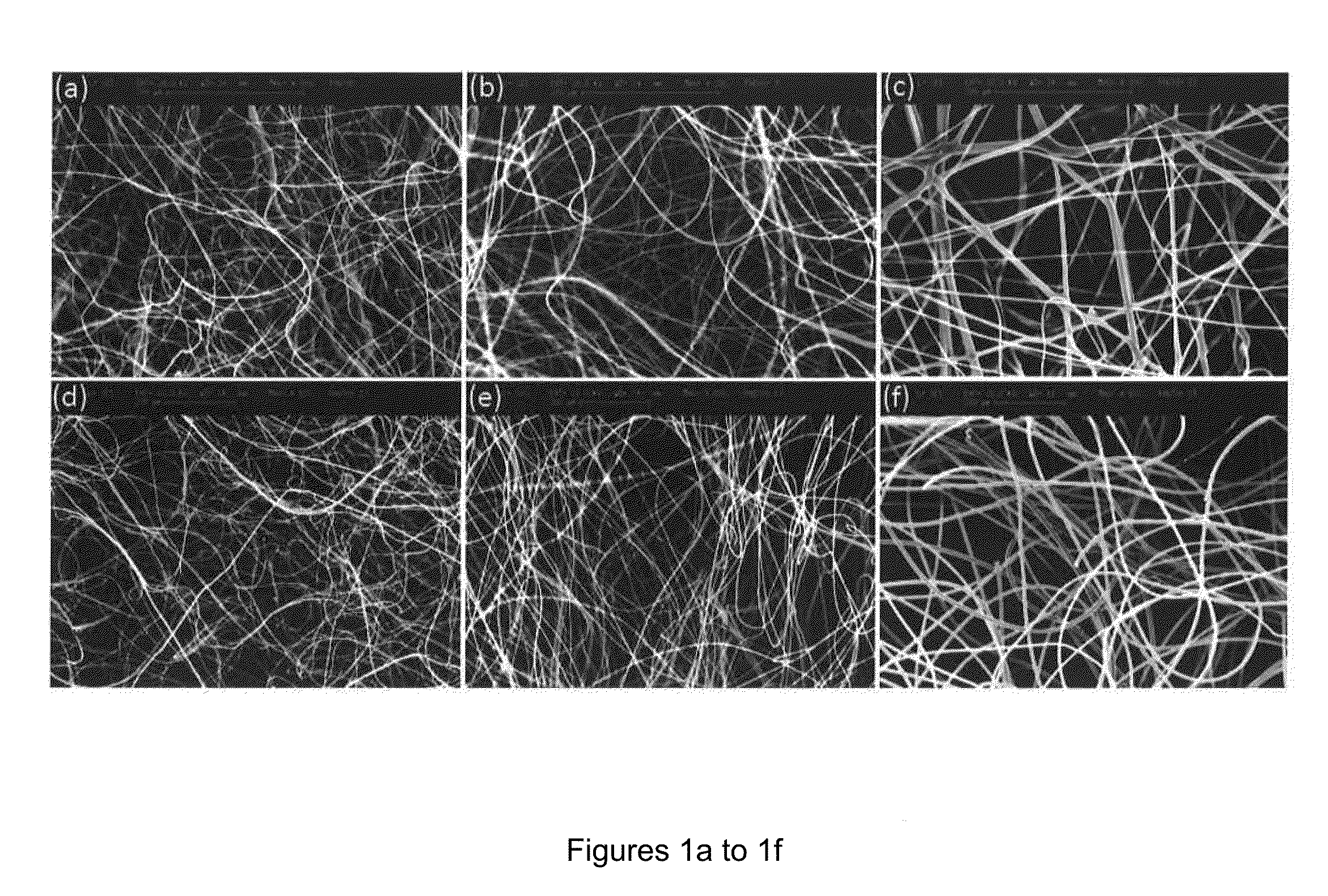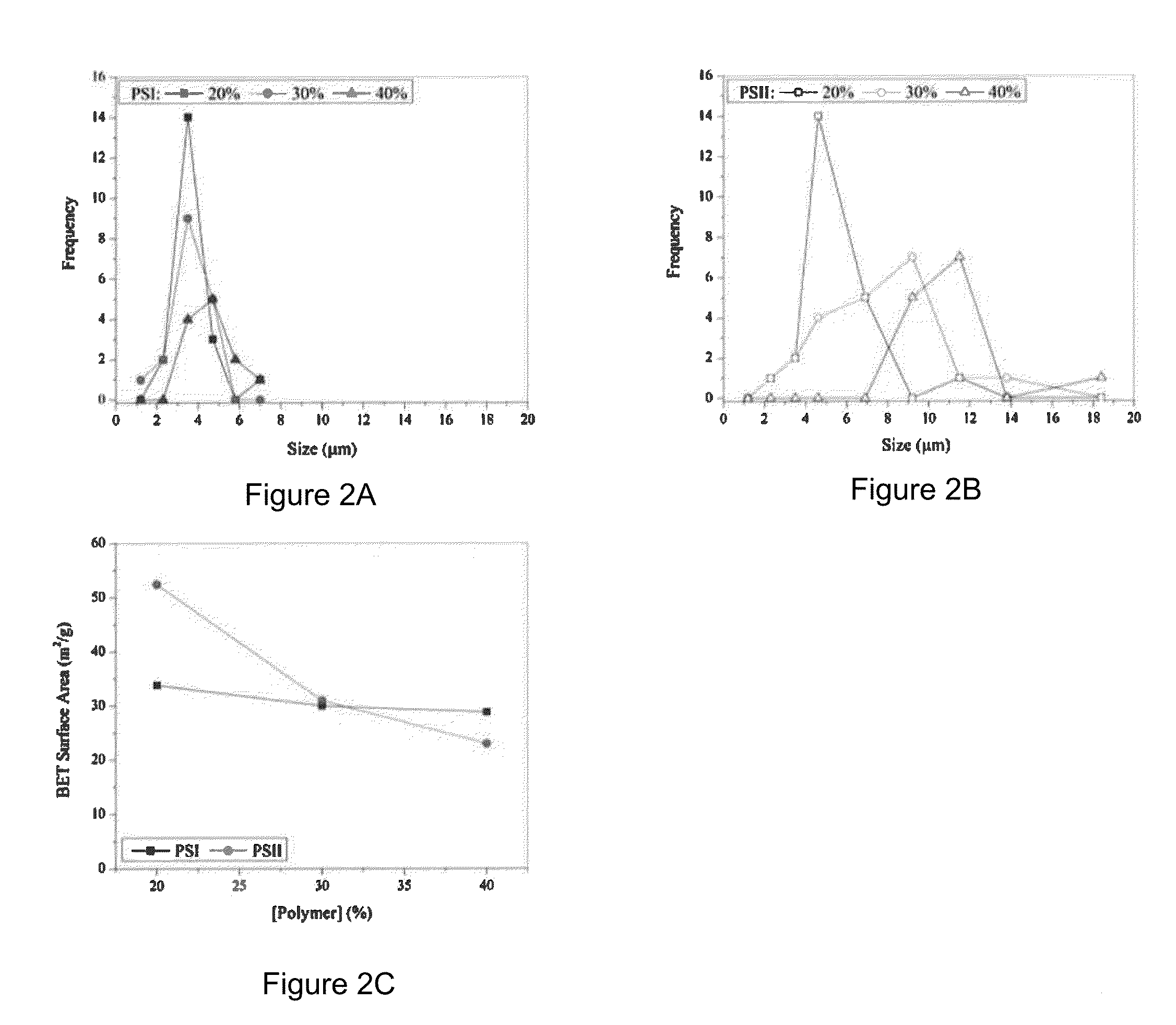Method For Treating Oil
a technology for oil spills and oil spouts, applied in water cleaning, separation processes, chemistry apparatuses and processes, etc., can solve the problems of increased pollution, and unsatisfactory nonwoven polypropylene fibrous mats
- Summary
- Abstract
- Description
- Claims
- Application Information
AI Technical Summary
Benefits of technology
Problems solved by technology
Method used
Image
Examples
example
[0066]Two types of polystyrene polymer beads (Mw=100,000 and 350,000 g / mol) were obtained from Avocado Research Chemicals Ltd and Sigma-Aldrich Companies, respectively. These two types of polystyrene were used to produce polystyrene microfibers, as will be described in more detail hereinbelow. The polystyrene microfibers produced as explained below will hereinafter be referred to as PSI and PSII, respectively.
[0067]N,Ndimethylformamide (DMF) (>99.8%) used in the production of the polystyrene mircofibres was obtained from Fluka, Switzerland. Crude oil used to test the absorption of the polystyrene microfibers was obtained ADNOC, Abu Dhabi, UAE.
[0068]Fabrication of the polystyrene microfibers will now be described hereinbelow.
[0069]Homogeneous solutions of PSI and PSII containing 20, 30, and 40 w / v % were prepared by dissolving the corresponding amounts of the polystyrene polymer beads in DMF. The polystyrene microfibers were then made using an electrospinning technique where 5 cc of ...
PUM
| Property | Measurement | Unit |
|---|---|---|
| Mass | aaaaa | aaaaa |
| Sorption coefficient | aaaaa | aaaaa |
| Sorption coefficient | aaaaa | aaaaa |
Abstract
Description
Claims
Application Information
 Login to View More
Login to View More - R&D
- Intellectual Property
- Life Sciences
- Materials
- Tech Scout
- Unparalleled Data Quality
- Higher Quality Content
- 60% Fewer Hallucinations
Browse by: Latest US Patents, China's latest patents, Technical Efficacy Thesaurus, Application Domain, Technology Topic, Popular Technical Reports.
© 2025 PatSnap. All rights reserved.Legal|Privacy policy|Modern Slavery Act Transparency Statement|Sitemap|About US| Contact US: help@patsnap.com



